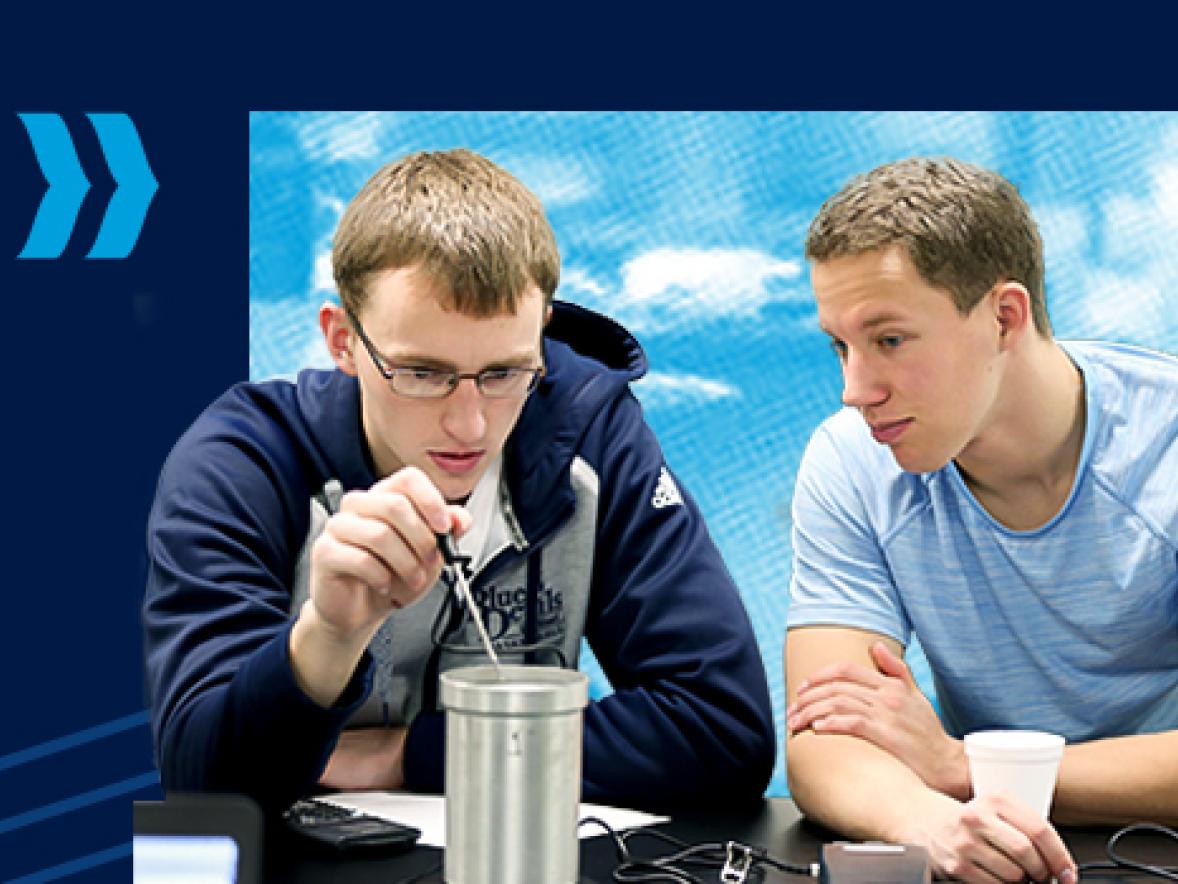A pop-up arcade store designed and researched through a pilot collaborative program between about a dozen University of Wisconsin-Stout engineering technology, mechanical design, mechanical engineering and retail students could soon be coming to a fair or outdoor concert near you.
Marilyn Fanetti of Menomonie is interested in building the moveable, self-contained entertainment retail store with games of chance such as coin pushers and claw machines. The arcade can be driven to events, easily set up and taken down. Two designs were created by students, one that is based on an ice fishing trailer manufactured by Ice Castle and another called a pod that is winched up on a truck trailer.
Students finished specifications and drawings in mid-December as part of their senior projects.
Fanetti, a longtime supportive community partner to UW-Stout, challenged students to design a pop-up arcade store that could be built for under $50,000 and could potentially hold up to 20 game machines.
Kevin Larson, a senior majoring in mechanical engineering from Cumberland, said weight was a major factor in the design. Arcade machines can weigh 150 to 300 pounds, depending on how many coins are in them. His team designed the pod system.
“We felt it was more attractive to consumers,” Larson said. “It eliminates the wheels.”
 Working with the other students, particularly the retail students, helped him learn to communicate better, Larson said.
Working with the other students, particularly the retail students, helped him learn to communicate better, Larson said.
“We had different points of view,” Larson said. “From our point of view the concern was the trailer was too heavy. Their view is they wanted it to be appealing. We need both those things. It must work mechanically but at the same time be appealing. It was definitely a good experience.”
Meriem Chida, assistant professor of retail management, said the collaborative project helps students learn communication skills that will be needed in their careers.
“We wanted to create this synergy,” Chida said. “We wanted to test the feasibility of an integrated product development and management platform that allows business and engineering students to work together to solve a real-world challenge while taking their capstone courses.
“This interdisciplinary interaction forces students to step outside their comfort zone and learn that real world problems required different expertise. The IPDM model is best suited to help students be exposed early in their career to break communication barriers across disciplines while managing to finish the project on time and on budget,” Chida said.
Having a pop-up arcade at fairs and other events is a good idea, Chida said, noting retail students helped study the feasibility of the store.
“You’re targeting people who are ready to spend, ready for fun,” Chida said. “Pop-up stores are becoming an intrinsic part in consumer engagement strategies by major retail brands.”
Scott Springer, a professor in the engineering and technology department, said having the students work together is a good idea and should continue when the right projects are available .
.
“We want to transition students to professionals,” he said. “It is about communication, working on teams and creating ideas. This kind of cross-discipline project helps prepare students for working in the real world.”
Jake Jubie, a retail management senior from Hudson, researched pop-up stores and retail trends associated with them. For example, he found that having a cell phone charging area helped attract customers. Engineers had to figure out how to design that into the store yet still have room for 20 or so arcade machines to make the store financially feasible.
Jubie enjoyed working with the engineering students because some aspects of the store, such as lighting and music, could be designed from the beginning. “We wanted to incorporate them for atmosphere. We wanted the store to be more inviting,” he said.
Working with the other students, Jubie said he learned about meeting deadlines. “If I am working in business, everyone has deadlines and you must work around their schedules,” Jubie said.
Jubie was the go-between for the client and the engineering students, explaining the client’s needs to the other students.
Helping design a pop-up store that is expected to be constructed made it even more real. “It definitely upped the stakes,” Jubie said. “I had never worked on a project where there was a real client in mind.”
Chuck Bomar, dean of College of Science, Technology, Engineering, Mathematics and Management, said having cross-disciplinary teams is critical for student development.
“It truly replicates the workplace environment,” Bomar said. “Having business and engineering students and faculty sitting at the same table with their business partners creates a higher level of knowledge about process ideation and production of products.”
 Bomar said such interdisciplinary teams will continue at UW-Stout. “We support this type of collaboration because of the incredible learning experience it provides to students and outreach to community partners,” Bomar said.
Bomar said such interdisciplinary teams will continue at UW-Stout. “We support this type of collaboration because of the incredible learning experience it provides to students and outreach to community partners,” Bomar said.
Fanetti said she was impressed with the students’ ideas. “They were excellent,” she said. “They are all going to be winners.”
Fanetti said she enjoyed working with the students, particularly because they were willing to do the research and were excited about the project.
“They have fresh ideas,” she said. “They are willing to learn. They take constructive criticism well. They had a lot of enthusiasm.”
###
Photos
UW-Stout student Zach Johnson, mechanical engineering, explains a pop-up arcade store design concept that Marilyn Fanetti of Menomonie wants to see built. The store was part of the students’ senior projects.
One of the pop-up arcade designs.
Meriem Chida
Scott Springer
Jake Jubie, a UW-Stout retail management senior, explains ideas to attract consumers to the pop-up arcade store.
Chuck Bomar






